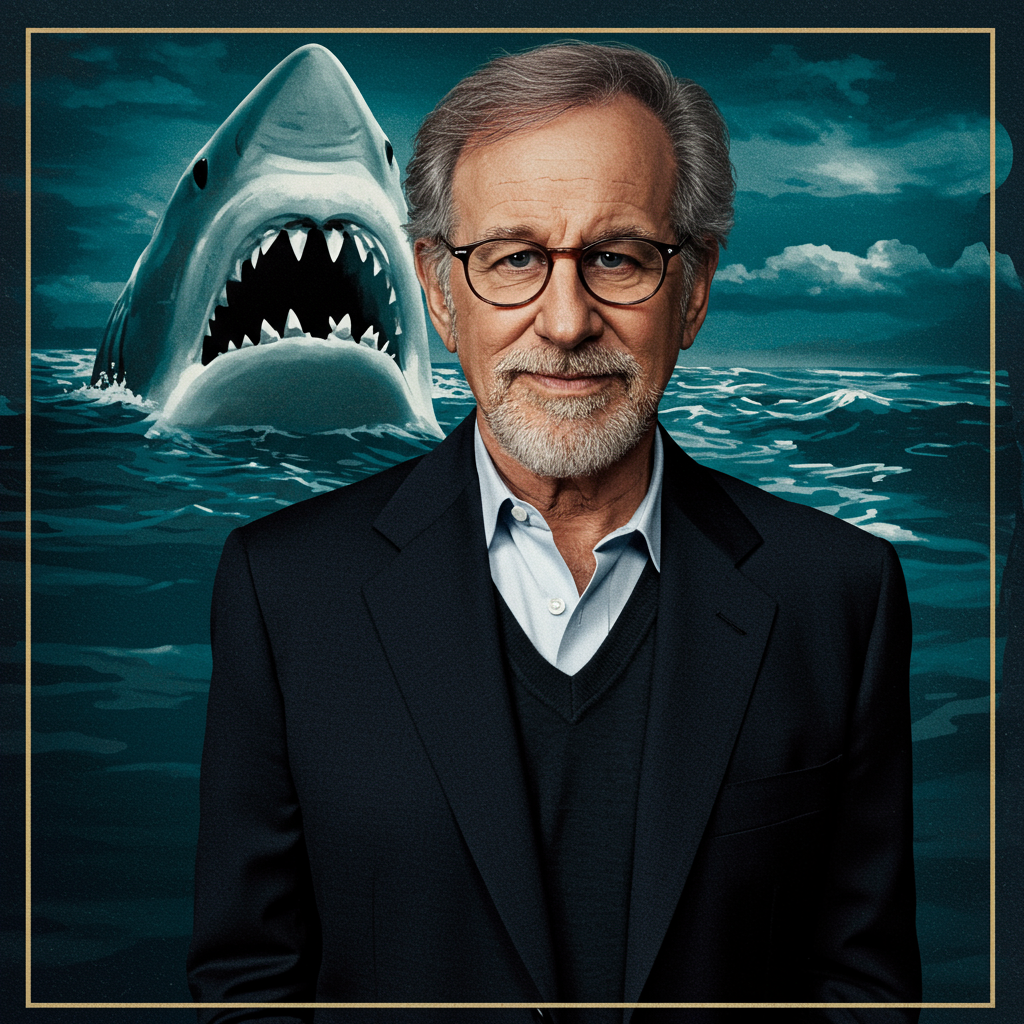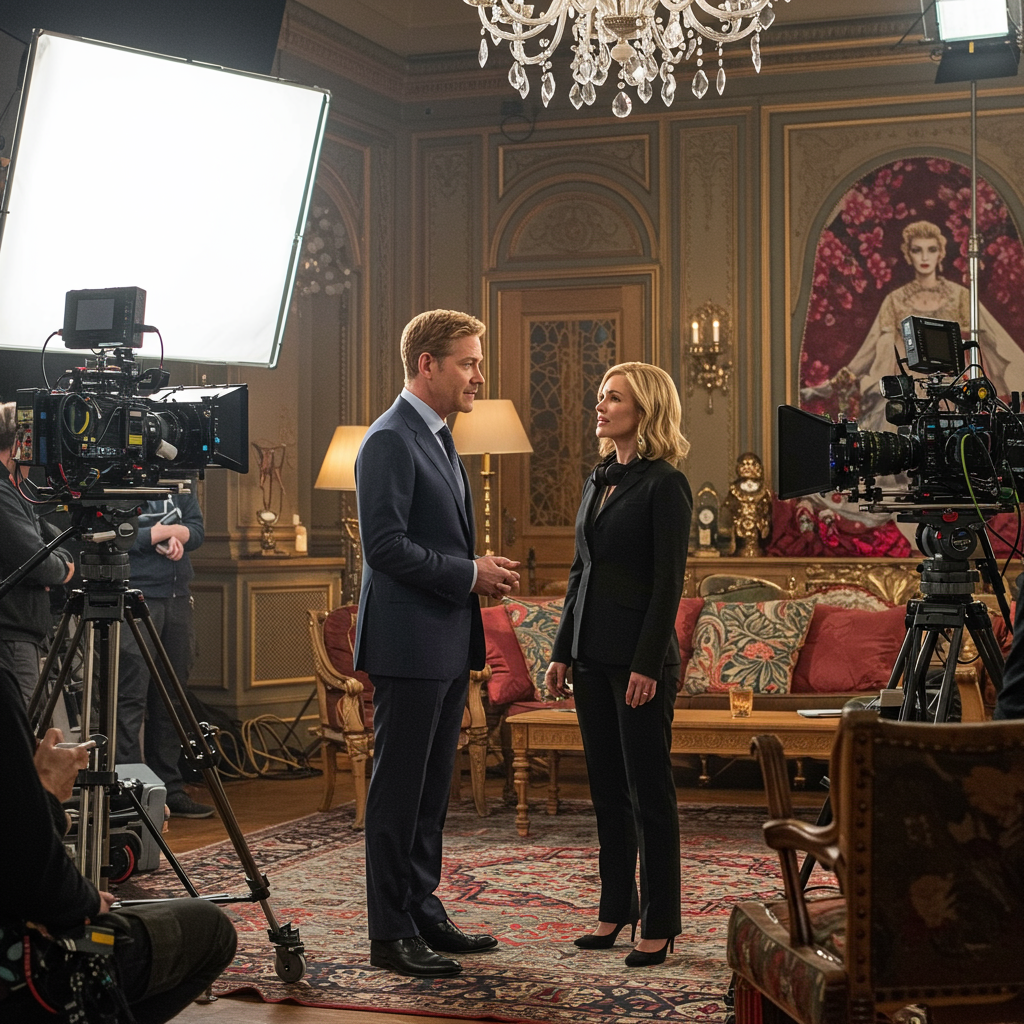Fifty years ago this summer, Steven Spielberg’s Jaws forever changed cinema, inventing the modern summer blockbuster and terrifying an entire generation out of the water. Released on June 21, 1975, the film remains a beloved masterpiece, rewatched and celebrated five decades later.
To mark this monumental anniversary, sink your teeth into some deep-cut trivia about the lore and legend surrounding the movie that made audiences scream. Think you know everything about the classic tale of a rogue shark terrorizing Amity Island? Test your knowledge!
Here are some fascinating facts and behind-the-scenes secrets from the making of Jaws:
The Shark’s Troublesome Name and Impact
What was the nickname given to the mechanical shark? Spielberg affectionately nicknamed his notoriously unreliable mechanical shark “Bruce,” a nod to his attorney, Bruce Ramer.
How did the shark’s malfunctions help the film? Saltwater was Bruce’s kryptonite. The Atlantic Ocean’s corrosive nature frequently rendered the animatronic shark unusable, especially early in production. This frustrating technical hurdle forced Spielberg to minimize the shark’s screen time, particularly in the first half. This constraint, ironically, built immense suspense, proving that what you don’t see can be far more terrifying than what you do. Spielberg himself estimated that the delays caused by Bruce’s issues added a staggering $175 million to the movie’s eventual box office take.
How long into the film does the shark fully appear? Due to the mechanical issues and Spielberg’s evolving vision, the great white terror isn’t fully revealed until a tension-building one hour and 21 minutes into the movie.
Origins and Inspirations
Where did the iconic title come from? Author Peter Benchley needed a title for his 1974 novel just as it was going to print. He’d considered several options like “Leviathan Rising” or “Silent Fall” before choosing “Jaws” at the very last minute. Benchley admitted to his editor he wasn’t entirely sure what it meant, but it was short and punchy.
What inspired the movie poster? The striking image of the massive shark rising towards a lone swimmer originated from the paperback cover of Benchley’s novel, illustrated by Roger Kastel. For his painting, Kastel studied photographs he took of a great white shark diorama at the American Museum of Natural History.
Where is the fictional Amity Island located, and what inspired it? While the movie famously filmed on Martha’s Vineyard, off Cape Cod, the inspiration for Benchley’s fictional town of Amity came from the neighboring island of Nantucket, where he had spent time fishing with his father. In the book, Amity is situated on the south shore of Long Island, New York.
Casting and Crew Insights
Who was originally attached to direct Jaws? Dick Richards was the initial choice for director. However, producer Richard D. Zanuck reportedly fired him after Richards repeatedly referred to the shark as a “whale” in a production meeting.
How old was Steven Spielberg when he started the project? Spielberg was just 26 years old when he embarked on directing what would become a cinematic landmark.
What major star sought the role of Chief Brody but was turned down? Legendary actor Charlton Heston expressed interest in playing Amity’s police chief. However, Spielberg opted to cast Roy Scheider instead, a decision that proved pivotal.
Does Spielberg appear in the film? While not physically seen, Spielberg’s voice can be heard. During the climactic finale, as Quint prepares his harpoon, Spielberg provides the voice of the Amity Point light-station radio operator calling the Orca. He also played clarinet briefly on John Williams’ iconic score, and Chief Brody’s two dogs in the movie were Spielberg’s own cocker spaniels. Author Peter Benchley also makes a cameo as a TV reporter during the chaotic July 4th beach scene.
Iconic Moments and Lines
What was the name of Quint’s boat? The gritty, ill-fated fishing boat was named the Orca. Not coincidentally, two years after Jaws‘ massive success, a film about a killer whale ripoff titled Orca was released in 1977.
Was the movie’s most famous line scripted? No, Roy Scheider’s unforgettable line, “You’re gonna need a bigger boat,” was an ad-lib. Screenwriter Carl Gottlieb confirmed the phrase was already an inside joke on set, a sarcastic remark about the inadequate size of the barge used for carrying equipment and catering. The crew would use it whenever something went wrong or felt insufficient.
What disaster was Quint a survivor of, and who wrote that monologue? Quint’s harrowing, memorable speech about surviving the sinking of the USS Indianapolis wasn’t in Benchley’s novel. Spielberg wanted a powerful backstory to explain Quint’s deep-seated hatred for sharks. According to Spielberg, the speech was penned by uncredited screenwriter John Milius. While debate over the exact authorship persists, most agree that actor Robert Shaw’s synthesis and powerful delivery brought the monologue to life and deserves much of the credit for the scene’s impact.
Production Challenges and Enduring Legacy
How far over schedule and budget did Jaws run? The production ballooned significantly, taking 159 days to complete against a scheduled 55. The budget also nearly tripled from its initial estimate, hitting $9 million, with another $3 million added in post-production.
What was the film’s original intended release window? Though it became the prototype for the summer movie season, Jaws was originally planned for a Christmastime release the year before.
What was the film’s controversial rating? Jaws received a PG rating from the Motion Picture Association of America, sparking some debate given its intense scenes. At the time, the PG-13 rating didn’t exist (it was introduced in 1984, partly influenced by later Spielberg productions like Indiana Jones and the Temple of Doom and Gremlins). The MPAA president defended the PG rating by arguing that the film featured “nature’s violence” rather than “man’s violence against man,” suggesting children were less likely to imitate it. The movie poster did, however, carry a warning: “MAY BE TOO INTENSE FOR YOUNGER CHILDREN.”
What film beat Jaws for Best Picture at the Oscars? Jaws was nominated for four Academy Awards and won three: Best Sound, Best Film Editing, and Best Original Score for John Williams’ iconic music. However, in a highly competitive year, it lost the Best Picture award to One Flew Over the Cuckoo’s Nest. Other nominees included Dog Day Afternoon, Barry Lyndon, and Nashville.
Fifty years on, the legend of Jaws* endures, a testament to its masterful filmmaking, unforgettable characters, and timeless ability to tap into our primal fears. How did you score on the trivia?



